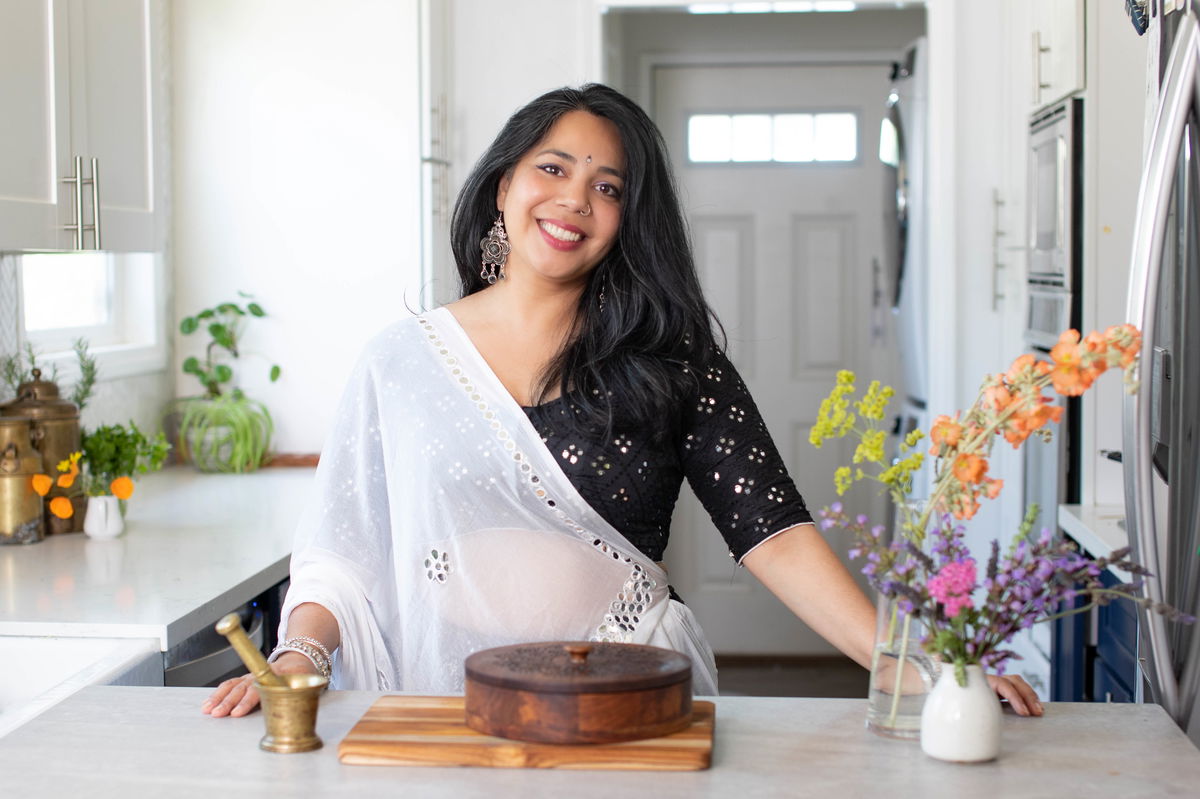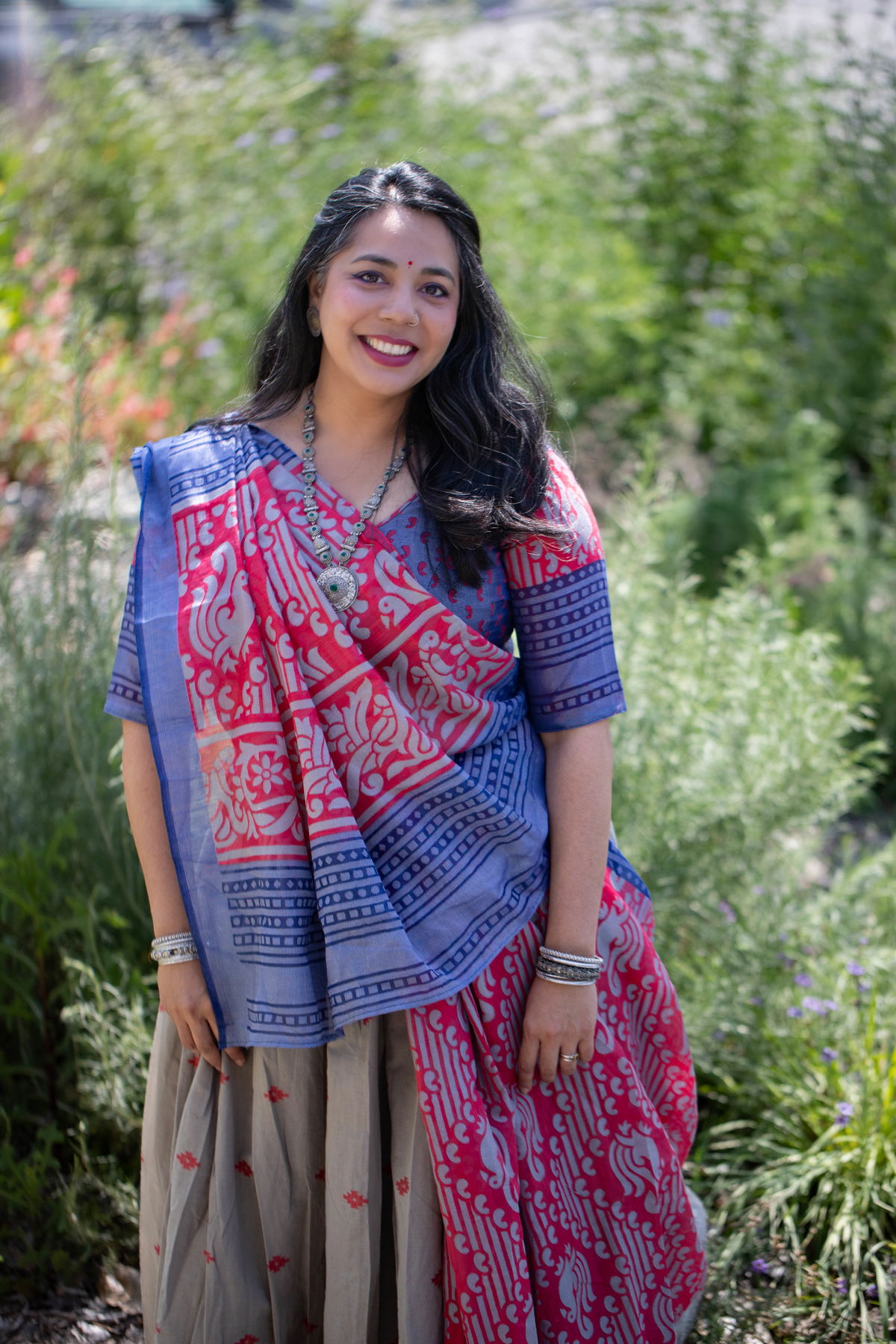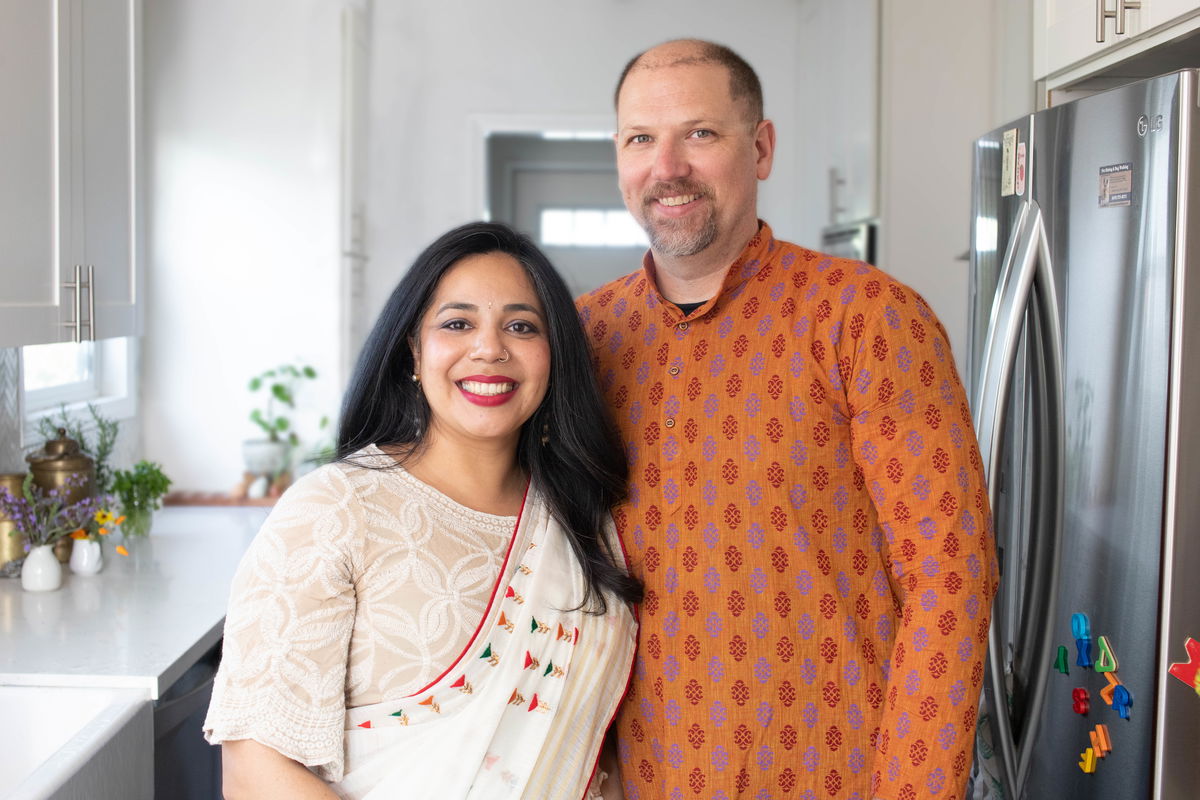About Us
Although it can sometimes appear intimidating, anyone can cook Indian food. My goal is to help you navigate the ingredients and techniques to cook the foods you want to cook the way you want to cook them.

The recipes featured on Indiaphile range from fun, creative recipes based on my Indian background to the traditional recipes near and dear to my heart. I spent much of my childhood in Bombay and on my family farm in Maharashtra, often visiting relatives in Gujarat. And I have many fond memories of boarding school in Panchgani.
I started Indiaphile in 2012, over a decade ago. It has been a deep learning experience as I have worked to perfect each recipe presented here. Every recipe on this site is highly tested, by me, focusing on details and reliability. I offer precise measurements and explain how they can be modified to fit your tastes and preferences.
My Personal Food Journey
I grew up cooking with my mom and grandma. I enjoyed it even as a very young child and could make rotlis on my own by the time I was 8. Growing up, I began to take note of and reject the patriarchy surrounding me. I started to avoid things that were traditionally thought of as “female.” I stopped cooking.
I exclusively lived on fast and frozen foods as I avoided cooking. I even told people I didn’t know how to cook. It took me years to come to terms with being both a feminist and someone who enjoys cooking. At first, I would make simple shaak rotli when I was homesick. My favorite was bhinda nu shaak.

Eventually, I began to see food as a way to connect with the women who came before me. I realized that cooking was a direct throughline to my ancestors, who didn’t have the same opportunities and agency as me. As a member of the diaspora, I began to see food as a way to experience, share, and preserve my culture.
My Grandmother and even my mother speak about food as if it were a profession. Which it certainly was for them. They put all the time and effort, sweat, and tears, into feeding their families. They learned intricate rules for what ingredients work well with each other and what foods to serve on what occasions. They followed nightly rituals of soaking rice and dal to make handvo and boiling milk to make yogurt. They set mango out in the sun to ferment and make chundo.
After years of avoidance, I learned to embrace my food traditions again. Not just to enjoy the food of my childhood but also as a way to celebrate the women who worked those long, hard hours to nourish their families.
I am now incredibly grateful that my mother passed down our heritage recipes and taught me so much about our family through food.
I also learned much about food from neighbors in Bombay and friends, cooks, and teachers in Panchgani. I was the little girl who’d rather watch people cook than play outside. I loved watching my Maharashtrian neighbors cook fiery fish curries spiked with kokum, my jain neighbors make shaak without any root vegetables, and my Kucchi neighbor churn butter the old-fashioned way – with a rope.
It is the food memories that I remember the most. I befriended many people from all over India who shared their foods and recipes with me. There truly is a story behind every recipe on this blog.
Modern Methods
Many of my recipes emphasize convenience. I use modern tools such as the Air Fryer and Instant Pot. Today’s world doesn’t always afford a lot of time for cooking. Few households have the luxury of a full-time cook; many of us work full-time jobs while responsible for making our family’s meals. We can respect our heritage as we modernize cooking methods for their time-savings and convenience.
That said, I continue to use and feature many of the tools that are deeply a part of Indian cooking. I often use a coffee grinder on my spices, but I adore my mortar and pestle and use it often. I always make my rotis and parathas with my tava (a mostly flat but slightly curved cast-iron pan), valen (Gujarati-style rolling pin), and marble or wooden adni (a hard, smooth surface for rolling rotis). And where would I be without my sarnsi (pliers for gripping handle-less pots) and chipiyo (Indian-style tongs)?
Innovation and Fusion
Aside from modern adapted cooking techniques, the blog also features recipes I made up, usually featuring Indian flavors and ingredients. Throughout history, India has been a culture of absorption and inclusion. As Indian Economist Amartya Sen said, ‘The Indian identity is not just a “surviving identity but an absorbing identity.”’
Fusion cooking has a long tradition in India, from Persian and Moghul foods like kabab and pulao to Indian Chinese and the deep two-way influence of the Portuguese and British on Indian cuisine. Today’s Indian food would be unrecognizable without chilies, potatoes, or tomatoes, all from South America.
Some of my favorite recipes are fusion desserts, like gulab jamun cake. I also love combining Mexican fusion meals, like dal makhani nachos and paneer tacos. Cooking should be fun and playful!
I also created a collection of simple Indian-inspired cocktails. Although many people in India shun alcohol, there is a rich history of alcoholic beverages in India. India has its own liquors, like palm toddy from Kerela and cashew feni from Goa. The colonial and post-colonial periods also brought interest in Gin and Whiskey to India.
Special Diets
Gujarat is sometimes referred to as the birthplace of vegetarianism. The Jain religion began in Gujarat, where they shun any food that might harm an animal or plant. Ethical vegetarianism caught on and spread throughout India, so much so that it is now deeply ingrained in our cuisine.
For that reason, many recipes easily fall into the “vegetarian diet,” and I try to indicate this wherever I can. Many recipes are vegan-friendly, sometimes requiring a simple substitution such as a dal containing ghee. In these cases, the ghee can be swapped for a vegetable-based oil to make the recipe vegan-friendly. I explain what changes can be made to adapt a recipe for different diets.
Did you know Indian cuisine is also a great place to look for gluten-free recipes? With India’s rich agricultural background, gluten-containing wheat flour is an important ingredient in Indian food. Still, rice, gluten-free seeds, and millet like bajra and jowar (sorghum) are featured in many dishes like flatbreads and porridge, which might otherwise use wheat.
Whether you are avoiding gluten because of sensitivity or simply as a way to reduce the amount of processed foods you consume, Indiaphile has many recipes that can help. For example, in the modern era, India has become a top producer and consumer of quinoa. Many traditional recipes are now made with quinoa instead of rice or grains, such as quinoa khichdi.
Interactivity and Community Engagement
If you have any questions about a recipe, or simply want to comment on it, please do! I love feedback, and you may find other indiaphiles even quicker to respond than me.
About Steve

Steve is my husband and partner on the blog. He is a web developer, and we started this blog together way back when food blogs were still figuring out what they were supposed to be doing – we certainly didn’t know what we were doing.
Indiaphile came about largely because of our long conversations about Indian food and culture that we felt other people might be interested in as well. We now have a young son who we also want to share this food and culture with. I like to think Indiaphile can help other Indian and mixed families share their culture with their children through food.
Steve handles most of the technical work, from web development, photography, videography, post editing, to less technical gardening, chicken raising, and taste-testing. He has a separate gardening blog with an emphasis on native plants, My SoCal Garden.
Copyright Policy
All photos (except those clearly marked) on Indiaphile.info are copyrighted, so please do not use without permission. It is okay to take one image (do not take multiple pictures from a single post) from a post and link to our blog for the full recipe. Please do not crop or edit our images in anyway. If you want to use our photos in a way that is not explicitly spelled out here and are not sure about our policy, please ask first.
If you’d like to use a photo in any way that does not refer back to our blog, such as for your business, advertising, etc. you will have to purchase the photo. We license our photos for commercial use.
We reserve the right to have any of our content taken down that we feel has been used inappropriately or in a way that would take traffic away from our site.
Contact Us
To contact Puja and Steve, e-mail us: [email protected] or fill out this form